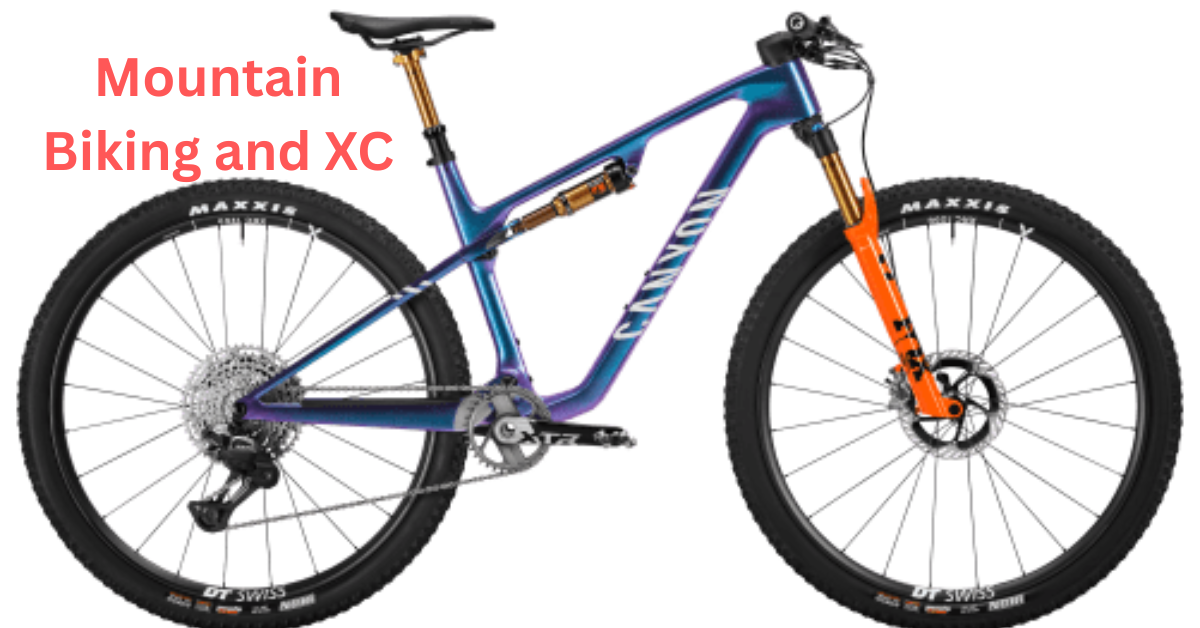Introduction
When it comes to mountain biking, the term “bike XC” stands out as one of the most popular and exciting aspects of the sport. Whether you’re a seasoned rider or just starting your journey, understanding the nuances of XC bikes is essential. In this article, we will delve deep into the world of bike XC, its key features, the best bikes for XC racing, and essential tips for enthusiasts. We will also discuss the different aspects of mountain bikes, the popular sport of XC racing, and provide expert XC bike reviews to help you make informed decisions.
Cross-country mountain biking, commonly known as XC racing, has gained immense popularity worldwide. Its appeal lies in the dynamic nature of the sport, combining speed, endurance, and technical skill. The right bike XC can drastically improve your performance and overall experience. Let’s explore the world of XC bikes in-depth and guide you through every aspect you need to know.
What is a Bike XC?
A bike XC, or cross-country bike, is a specialized mountain bike designed for off-road riding, particularly in competitive racing. These bikes are built for endurance and speed, making them ideal for cross-country events, long-distance trails, and rugged terrains. Unlike other mountain bikes designed for downhill or freeride styles, XC bikes focus on efficient pedaling, lightweight frames, and versatility to handle various trail conditions.
Key Features of Bike XC
- Lightweight Frame: The hallmark of a bike XC is its lightweight frame. Made from materials such as carbon fiber or aluminum, these bikes are engineered to minimize weight without compromising durability. This makes them ideal for racing, where every second counts, and speed is essential.
- Suspension: While most mountain bikes feature full suspension for tackling rough terrains, XC bikes typically come with either front suspension (hardtail) or lightweight full suspension to balance comfort and speed. Hardtail bikes are often preferred for XC racing, as they offer greater power transfer to the pedals.
- Tires and Wheels: Bike XC tires are narrower than those of other mountain bikes, providing lower rolling resistance and greater speed on smooth trails. The wheels are also lightweight, enabling faster acceleration and smoother riding.
- Gearing System: The gearing system on an XC bike is designed for efficiency. With a wide range of gears, XC bikes allow riders to tackle both steep ascents and fast descents with ease, ensuring smooth performance on various terrains.
- Brakes: Disc brakes are commonly used on XC bikes for their superior stopping power, particularly on wet or muddy trails. These brakes provide more control and are essential for high-speed descents.
The Popularity of Mountain Bike XC
Mountain biking, particularly XC racing, has seen a significant rise in popularity over the past few decades. The sport offers a thrilling challenge to riders of all skill levels, combining physical endurance, technical skills, and strategic thinking. Races are held on a variety of terrains, from dirt trails and forests to rocky hills and steep climbs. The excitement of competing in XC racing comes from the combination of speed, endurance, and terrain challenges, which can test a rider’s limits.
The Evolution of XC Racing
XC racing has evolved from its early roots in the 1970s to become one of the most prestigious forms of mountain biking. With the introduction of international competitions such as the UCI Mountain Bike World Cup, XC racing has grown into a professional sport, attracting top athletes from around the globe. As technology has advanced, the designs of XC bikes have also improved, providing racers with even greater advantages in terms of speed, agility, and control.
Choosing the Right Bike for XC Racing
Selecting the right bike XC for your needs is essential, especially if you’re aiming to participate in XC racing. Here are some key factors to consider when making your decision:
1. Frame Material
The frame material plays a crucial role in the bike’s weight, strength, and overall performance. Carbon fiber is the most sought-after material due to its lightweight and stiffness. However, it comes at a premium price. Aluminum frames, on the other hand, are slightly heavier but offer great durability at a more affordable price.
2. Suspension Type
When choosing an XC bike, decide whether you prefer a hardtail (front suspension only) or a full-suspension bike. Hardtails are generally lighter and more efficient for XC racing as they transfer more power to the pedals. Full-suspension bikes are better suited for rougher terrain but come with a slight weight penalty.
3. Wheel Size
The wheel size is a crucial aspect of the bike XC design. Most XC bikes come with either 27.5-inch or 29-inch wheels. Larger wheels, such as 29-inch, provide better traction and stability, especially on rough trails, but may be slightly less agile in tight turns.
4. Gearing and Drivetrain
An efficient gearing system is essential for XC racing. A wide range of gears ensures that you can easily tackle steep climbs while maintaining speed on flat terrain. Choose a bike with a reliable drivetrain, such as SRAM or Shimano, known for their precision and durability.
5. Braking System
The braking system is another vital factor in choosing a bike XC. Disc brakes, particularly hydraulic disc brakes, offer excellent stopping power, which is crucial when racing at high speeds on unpredictable terrain.
XC Bike Reviews: Top Picks for Performance
To help you make an informed decision, we have reviewed some of the top XC bikes available on the market today. These bikes are ideal for those looking to compete in XC racing or simply enjoy a high-performance mountain biking experience.
1. Trek Procaliber 9.8 SL
The Trek Procaliber 9.8 SL is a standout in the XC bike category, offering exceptional speed and efficiency. With its lightweight carbon frame, responsive suspension, and top-tier components, this bike is a great option for both competitive racers and recreational riders. The Procaliber 9.8 SL features Trek’s exclusive IsoSpeed decoupler, which allows for a smoother ride while maintaining stiffness for better power transfer.
2. Specialized Epic Expert Carbon
The Specialized Epic Expert Carbon is another fantastic option for XC racing. It combines lightweight carbon construction with a full-suspension design to provide comfort without sacrificing speed. The bike’s suspension system is specifically tuned for XC, making it perfect for long-distance rides and racing.
3. Cannondale F-Si Carbon 1
The Cannondale F-Si Carbon 1 is known for its ultra-lightweight frame and exceptional responsiveness. This bike is perfect for aggressive XC racing, offering precision handling and efficient power transfer. With a unique Lefty fork and carbon frame, the F-Si Carbon 1 provides a smooth and stable ride on rough trails.
Pros and Cons of Bike XC
To provide a well-rounded view, here is a table listing the pros and cons of bike XC.
| Pros | Cons |
|---|---|
| Lightweight design for enhanced speed | Can be expensive, especially carbon models |
| Ideal for competitive XC racing | Limited suspension travel compared to other MTB types |
| Excellent power transfer and pedaling efficiency | Not suitable for extreme downhill terrain |
| Great for long-distance riding and endurance | Less comfort on very rough trails without full suspension |
| Superior handling and maneuverability | Can be challenging for beginners on technical terrain |
Conclusion
Choosing the right bike XC is crucial for getting the most out of your mountain biking experience. Whether you’re looking to race in XC racing competitions or simply enjoy a high-performance bike on rugged trails, understanding the key features of XC bikes can help you make the best decision. By considering factors such as frame material, suspension type, and gearing, you’ll be able to choose the bike that best suits your needs.
If you’re a passionate rider seeking speed, agility, and efficiency, investing in a quality XC bike will enhance your experience, whether you’re tackling steep climbs or zooming down smooth trails. Be sure to consider the expert XC bike reviews and pick a bike that meets your racing or recreational needs.
FAQs
Q1: What makes a bike XC different from other mountain bikes?
A: Bike XC is designed specifically for speed and efficiency, focusing on lightweight frames, minimal suspension, and superior power transfer. Unlike downhill or freeride bikes, XC bikes are optimized for endurance and long-distance riding.
Q2: Is a full-suspension or hardtail bike better for XC racing?
A: A hardtail bike is typically better for XC racing as it is lighter and more efficient for power transfer. However, if you plan to ride on rougher terrain, a full-suspension bike may offer more comfort.
Q3: Can I use a bike XC for casual mountain biking?
A: Yes, XC bikes are versatile and can be used for casual mountain biking, but they are designed with racing in mind, so they excel in performance on smooth trails and long-distance rides.
Q4: How do I maintain my XC bike?
A: Regular maintenance is essential for ensuring your XC bike performs at its best. Keep the drivetrain clean, check the tires for wear, and inspect the suspension regularly. It’s also important to keep the brakes in top condition.


